To my knowledge, there are three R packages that allow the estimation of the multinomial logistic regression model: mlogit, nnet and globaltest (from Bioconductor). I do not consider here the mnlogit package, a faster and more efficient implementation of mlogit.
All the above packages use different algorithms that, for small samples, give different results. These differencies vanishes for moderate sample sizes (try with n <- 100).
Consider the following data generating process taken from the James Keirstead's blog:
n <- 40
set.seed(4321)
df1 <- data.frame(x1=runif(n,0,100), x2=runif(n,0,100))
df1 <- transform(df1, y=1+ifelse(100 - x1 - x2 + rnorm(n,sd=10) < 0, 0,
ifelse(100 - 2*x2 + rnorm(n,sd=10) < 0, 1, 2)))
str(df1)
'data.frame': 40 obs. of 3 variables:
$ x1: num 33.48 90.91 41.15 4.38 76.35 ...
$ x2: num 68.6 42.6 49.9 36.1 49.6 ...
$ y : num 1 1 3 3 1 1 1 1 3 3 ...
table(df1$y)
1 2 3
19 8 13
The model parameters estimated by the three packages are respectively:
library(mlogit)
df2 <- mlogit.data(df1, choice="y", shape="wide")
mlogit.mod <- mlogit(y ~ 1 | x1+x2, data=df2)
(mlogit.cf <- coef(mlogit.mod))
2:(intercept) 3:(intercept) 2:x1 3:x1 2:x2 3:x2
42.7874653 80.9453734 -0.5158189 -0.6412020 -0.3972774 -1.0666809
#######
library(nnet)
nnet.mod <- multinom(y ~ x1 + x2, df1)
(nnet.cf <- coef(nnet.mod))
(Intercept) x1 x2
2 41.51697 -0.5005992 -0.3854199
3 77.57715 -0.6144179 -1.0213375
#######
library(globaltest)
glbtest.mod <- globaltest::mlogit(y ~ x1+x2, data=df1)
(cf <- glbtest.mod@coefficients)
1 2 3
(Intercept) -41.2442934 1.5431814 39.7011119
x1 0.3856738 -0.1301452 -0.2555285
x2 0.4879862 0.0907088 -0.5786950
The mlogit command of globaltest fits the model without using a reference outcome category, hence the usual parameters can be calculated as follows:
(glbtest.cf <- rbind(cf[,2]-cf[,1],cf[,3]-cf[,1]))
(Intercept) x1 x2
[1,] 42.78747 -0.5158190 -0.3972774
[2,] 80.94541 -0.6412023 -1.0666813
Concerning the estimation of the parameters in the three packages, the method used in mlogit::mlogit is explained in detail here.
In nnet::multinom the model is a neural network with no hidden layers, no bias nodes and a softmax output layer; in our case there are 3 input units and 3 output units:
nnet:::summary.nnet(nnet.mod)
a 3-0-3 network with 12 weights
options were - skip-layer connections softmax modelling
b->o1 i1->o1 i2->o1 i3->o1
0.00 0.00 0.00 0.00
b->o2 i1->o2 i2->o2 i3->o2
0.00 41.52 -0.50 -0.39
b->o3 i1->o3 i2->o3 i3->o3
0.00 77.58 -0.61 -1.02
Maximum conditional likelihood is the method used in multinom for model fitting.
The parameters of multinomial logit models are estimated in globaltest::mlogit using maximum likelihood and working with an equivalent log-linear model and the Poisson likelihood. The method is described here.
For models estimated by multinom the McFadden's pseudo R-squared can be easily calculated as follows:
nnet.mod.loglik <- nnet:::logLik.multinom(nnet.mod)
nnet.mod0 <- multinom(y ~ 1, df1)
nnet.mod0.loglik <- nnet:::logLik.multinom(nnet.mod0)
(nnet.mod.mfr2 <- as.numeric(1 - nnet.mod.loglik/nnet.mod0.loglik))
[1] 0.8483931
At this point, using stargazer, I generate a report for the model estimated by mlogit::mlogit which is as similar as possible to the report of multinom.
The basic idea is to substitute the estimated coefficients and probabilities in the object created by multinom with the corresponding estimates of mlogit.
# Substitution of coefficients
nnet.mod2 <- nnet.mod
cf <- matrix(nnet.mod2$wts, nrow=4)
cf[2:nrow(cf), 2:ncol(cf)] <- t(matrix(mlogit.cf,nrow=2))
# Substitution of probabilities
nnet.mod2$wts <- c(cf)
nnet.mod2$fitted.values <- mlogit.mod$probabilities
Here is the result:
library(stargazer)
stargazer(nnet.mod2, type="text")
==============================================
Dependent variable:
----------------------------
2 3
(1) (2)
----------------------------------------------
x1 -0.516** -0.641**
(0.212) (0.305)
x2 -0.397** -1.067**
(0.176) (0.519)
Constant 42.787** 80.945**
(18.282) (38.161)
----------------------------------------------
Akaike Inf. Crit. 24.623 24.623
==============================================
Note: *p<0.1; **p<0.05; ***p<0.01
Now I am working on the last issue: how to visualize loglik, pseudo R2 and other information in the above stargazer output.



